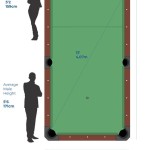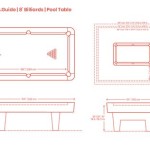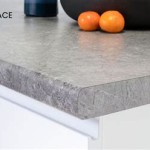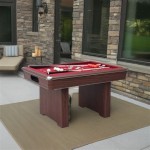How Do You Get Water Stains Off A Marble Table Top?
Marble, prized for its elegant appearance and luxurious feel, is a metamorphic rock often used in countertops, flooring, and, notably, table tops. Its porous nature, a characteristic contributing to its unique beauty, also makes it susceptible to staining, particularly from water. Water stains on marble can appear as dull rings, light spots, or dark discolorations, detracting from the stone's aesthetic appeal. Removing these stains requires a careful and methodical approach to avoid further damage.
Understanding the nature of water damage on marble is crucial before attempting any cleaning method. Water, when left to sit on the surface, can penetrate the porous stone. This can lead to two primary staining mechanisms. First, the water can dissolve minerals within the marble itself, redepositing them unevenly as it evaporates. This results in the formation of visible rings or spots. Second, the water can facilitate the absorption of other staining agents, such as minerals from the water source itself (like hard water deposits) or spills that haven’t been immediately cleaned. The success of stain removal depends largely on the type of stain, the depth of penetration, and the promptness of the cleaning attempt.
Identifying the Type of Water Stain
Before implementing any cleaning technique, it is essential to determine the specific type of water stain present. This identification will guide the choice of appropriate cleaning agents and methods. Common water stains on marble can be broadly categorized into hard water stains and simple water marks. Hard water stains are typically caused by calcium and magnesium deposits left behind as the water evaporates. These stains often appear as a white or grayish film on the surface. Simple water marks, on the other hand, are generally caused by the water itself penetrating the marble's surface, altering its reflectivity and creating a dull appearance. These stains are often less pronounced and easier to remove than hard water stains.
Differentiating between these two types often involves close inspection. A hard water stain will often have a slightly raised or textured feel when touched. Simple water marks will typically feel smooth and blend seamlessly with the surrounding marble surface, despite the visual discoloration. The clarity and source of the water causing the stain can also provide clues. If the water supply is known to be hard (high in mineral content), the stain is more likely to be a hard water deposit. If distilled or purified water caused the stain, it is more likely to be a simple water mark.
In addition to these common types, water can also contribute to more complex stains involving other dissolved substances. For example, if sugary drinks or acidic substances are spilled and not cleaned immediately, the water component can carry these into the marble, resulting in a combined water and substance stain. These stains may require more specialized cleaning solutions.
Effective Cleaning Methods for Water Stains
Once the type of water stain is identified, appropriate cleaning methods can be employed. For simple water marks, a gentle approach is often sufficient. For hard water stains or more stubborn discolorations, a combination of methods may be necessary.
The first and most basic method involves using a soft, clean cloth and warm water. Dampen the cloth and gently wipe the affected area, working in circular motions. This can sometimes be enough to remove fresh, minor water marks. It's crucial to avoid using abrasive cloths or scrub brushes, as these can scratch the marble surface. After wiping, thoroughly dry the area with a clean, dry cloth. This step is essential to prevent the formation of new water stains.
For more persistent water marks, consider using a mild dish soap solution. Mix a few drops of pH-neutral dish soap with warm water. Apply the solution to the stain with a soft cloth, gently rubbing the area. Rinse thoroughly with clean water and dry completely. Again, it’s important to ensure that the dish soap is pH-neutral, as acidic or alkaline cleaners can damage the marble. Avoid prolonged contact of the soapy solution with the marble, as this can also lead to dulling or discoloration.
Vinegar, while a common household cleaner, should be used with extreme caution on marble. Due to its acidic nature, vinegar can etch the marble surface, causing permanent damage. If you choose to use vinegar, dilute it significantly with water (a ratio of 1 part vinegar to 10 parts water) and test it on an inconspicuous area first. Apply the diluted solution sparingly to the stain, let it sit for a very brief period (no more than a minute), and then rinse thoroughly with clean water and dry completely. Only use this method if other, gentler methods have failed.
For hard water stains, a baking soda paste can be effective. Mix baking soda with water to form a thick paste. Apply the paste to the stain and let it sit for several hours or overnight. The baking soda acts as a mild abrasive, helping to lift the mineral deposits. After the paste has dried, gently wipe it away with a damp cloth and rinse thoroughly with clean water. Dry the area completely. Avoid scrubbing vigorously, as this can still scratch the marble. This method often requires multiple applications for complete stain removal.
Commercial marble cleaners specifically formulated for stone care are also available. These cleaners are designed to be gentle on marble while effectively removing stains and dirt. Follow the manufacturer's instructions carefully when using these products. Always test the cleaner on an inconspicuous area first to ensure it does not cause discoloration or damage.
In cases of deep or stubborn stains, a poultice may be necessary. A poultice is a mixture of absorbent material and a cleaning agent that is applied to the stain and allowed to draw it out over time. Common poultice materials include diatomaceous earth, baking soda, and flour. The cleaning agent used in the poultice depends on the type of stain. For hard water stains, a mixture of diatomaceous earth and hydrogen peroxide can be effective. For other types of water-related stains, a mixture of diatomaceous earth and the mild dish soap solution mentioned earlier may be suitable. Apply the poultice to the stain, cover it with plastic wrap, and let it sit for 24 to 48 hours. The plastic wrap helps to keep the poultice moist and prevent it from drying out too quickly. After the poultice has dried, remove it and wipe the area clean with a damp cloth. Rinse thoroughly and dry completely. This process may need to be repeated several times for complete stain removal. Always test the poultice on an inconspicuous area first.
Preventing Future Water Stains
Prevention is key to maintaining the beauty of a marble table top. Taking proactive measures to protect the surface from water damage can significantly reduce the need for intensive cleaning and stain removal.
One of the most effective preventive measures is to seal the marble surface. Marble sealers penetrate the stone and create a barrier that repels water and other liquids. Regular sealing, typically every 6 to 12 months, is essential to maintain this protection. Choose a sealer specifically designed for marble and follow the manufacturer's instructions carefully. Before applying the sealer, ensure that the marble surface is clean and dry. Apply the sealer evenly and allow it to cure completely before using the table top.
Using coasters and placemats under glasses, cups, and plates is another simple but effective way to prevent water stains. Coasters provide a barrier between the condensation from cold drinks and the marble surface. Placemats protect the table top from spills and drips during meals. Choose coasters and placemats made of absorbent materials, such as cork or felt, to further minimize the risk of water damage.
Promptly wiping up spills is crucial. The longer water or other liquids sit on the marble surface, the greater the chance of staining. Keep a soft cloth readily available for immediate clean-up. Avoid using abrasive cleaners or scrub brushes, as these can scratch the marble. Blot spills gently instead of wiping, as wiping can spread the stain further.
When cleaning the table top, avoid using excessive amounts of water. Dampen a soft cloth with water and wring it out thoroughly before wiping the surface. Dry the surface immediately after cleaning to prevent water from penetrating the marble. Avoid leaving wet cloths or sponges on the marble surface, as this can lead to water stains.
Consider the water quality. Hard water, as mentioned earlier, can leave mineral deposits on the marble. If your water supply is hard, consider using filtered water for cleaning the table top. This will help to reduce the risk of hard water stains. Regularly clean faucets and other fixtures near the table top to prevent water drips and splatters from causing stains.
By understanding the nature of water stains on marble, employing appropriate cleaning methods, and implementing preventive measures, one can effectively maintain the beauty and elegance of a marble table top for years to come. Regular care and attention are essential to protect this valuable investment and preserve its aesthetic appeal.

How To Remove Water Stains From Marble Countertops Eagle Stones Granite

How To Remove Stains From Marble Porcelain Countertop Tiling Logistics Blog

How To Remove Stains And Water Marks From Marble Countertops Brownstone Cyclone

How To Remove Hard Water Stains From Granite Countertops Professional Results At Home

How To Remove Hard Water Stains From Marble Handmade Weekly

How To Clean Water Stains From Granite A Guide By Bc Stone

Home Blog How To Remove Water Stains From Marble Or Granite

Remove Water Stains On Carrara Marble

I Left Some Wet Rags On My Granite Countertops This Stain Appeared

Granite Countertop Slabs Tips To Remove Water Marks
Related Posts








